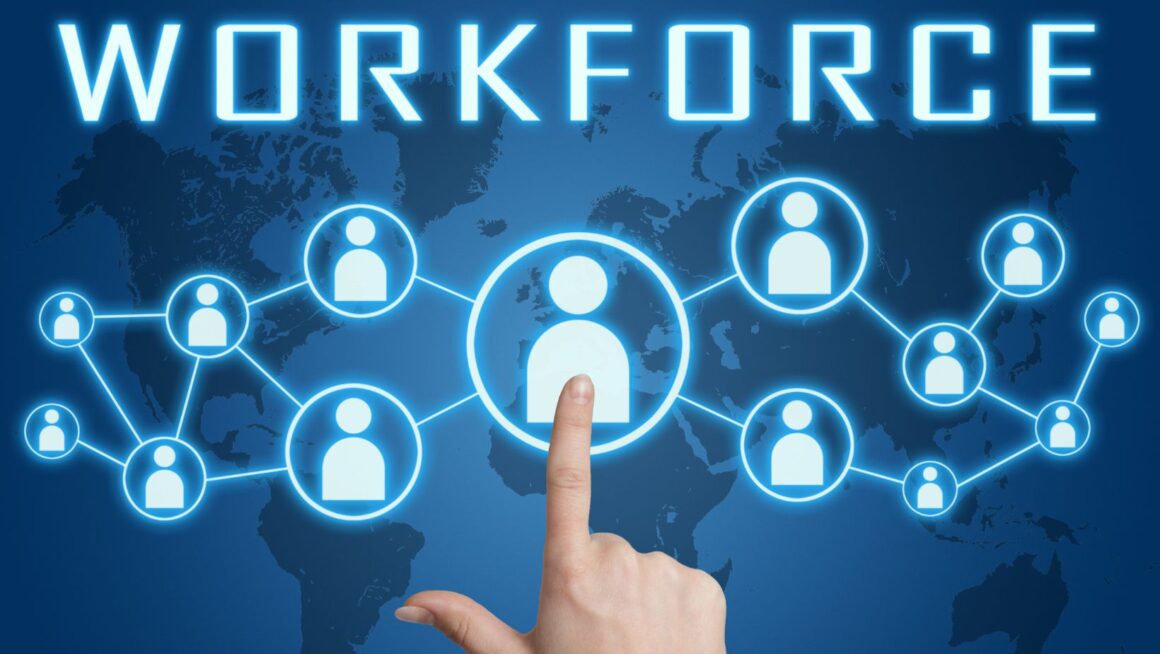At the start of the 1980s, building codes became stricter as construction costs spiraled out of control. Add rising interest rates and inflation; it is easy to see why construction trends flipped towards retrofitting instead of new buildings.
Office buildings housed more than 40% of the workforce at the time. Since new construction slowed to almost a stop, renting office spaces became nearly impossible.
Hence, upgrading was the order of the day. Open-plan offices saw the light, and cubicles were added everywhere. There was some resistance to this trend, but by the middle of the decade, around half of all workspaces used the open-plan technique.
Office spaces opened up a bit more during the 1990s, and by 2000, there was a push for casual offices.
Today, the modern workforce has diverse office space needs. This is mainly because workplaces comprise multi-generational workers: Boomers, Millennials, Gen Z, and Gen X. They all try to share one space.
So, it is not always that easy to keep everyone happy.
Multi-Generational Expectations and Requirements
Creating a workspace that works for multiple generations is possible, but only if each group’s expectations are considered.
For instance, Boomers prefer work stability and a clear reporting path (hierarchy). Most want the opportunity to communicate face-to-face and within a dedicated workstation. Moreover, Boomers appreciate recognition for their many years of experience and contribution to the workplace.
Regarding Gen X, most employees in this age group want to work independently and rely on their own experience to get things done. At the same time, they want a clear direction on how their day should be structured and a sufficient work-life balance.
Millennials are a little more interested in technology and working together. They find purpose in completing their tasks and prefer a sense of community at work. Most want open-plan offices but prefer separate areas for breaks and brainstorming.

Finally, there is Gen Z. These employees are the newest entrants in the U.S. workforce and are all about technology, entrepreneurship, and social consciousness. Gen Z does not thrive on rigid office spaces and the traditional 9-5 office hours.
They want the freedom to work from anywhere and only come into the office when necessary. They also highly value workplace autonomy, personalization, and well-being.
Designing a Workspace That Works for Everyone
Understanding generational differences is the first step in designing a usable workspace. However, there must also be a complete understanding of physical office space and how to design and set it up to appeal to everyone.
For some companies, activity-based workspaces work incredibly well. Activity-based working refers to a design that includes several settings that can host work-related tasks and activities.
Activity-based offices include individual workspaces and a concept known as focus rooms. This setup is not unlike a typical office, but it also includes one-person rooms, individual desks, and shared desks.
The point is to give everyone in the office a space that works for them. Some prefer working on their own, and others prefer working together. Activity-based spaces allow them to work according to preference.
These office spaces also include project and meeting rooms and, in modern times, cafes, private lounges, and pitch rooms.
It is also crucial for a multi-generational workspace to have a technological infrastructure that caters to all workers. Some may prefer working on simpler systems, while others want the technology to handle almost all aspects of their workday.
Wellness in the Workplace
Over the years, great strides have been made towards ensuring wellness in the workplace. Before the COVID pandemic, this was not a main concern for many companies. However, after the havoc wreaked by this unprecedented situation, most businesses are making changes to promote physical and mental well-being.
These changes include the latest ergonomic furniture and natural lighting where possible. It includes sufficient breaks and time off. Some companies are also including fitness and healthy food in their office spaces.
Many are also adding elements of nature through biophilic design, including many earth tones, plants, and art. Companies use this concept in yoga rooms and fitness spaces to encourage serenity and calm, especially for busy offices.
Looking Beyond Workspace Design
There is much to be said for including everyone’s preferences in an open-plan office or a multi-story building. However, all the designs in the world will not guarantee that multiple generations will work together in harmony.
Modern offices and workplaces need additional strategies to help employees get along.
Several companies already use mentoring programs to facilitate communication between employees. This means pairing experienced workers with younger colleagues to foster employee upskilling and shared perspectives. These pairings promote multi-generational respect and understanding while furthering skills development.
Diverse communication strategies also affect how employees communicate with one another. Companies should ideally have several options, including face-to-face meetings, messaging platforms, and internal email systems.

Most importantly, considering our age, there is a great need for diversity and inclusion training. Sometimes, one set of employees does not fully understand the next, leading to friction, especially related to culture and background.
Workshops and training programs can help build an inclusive environment that fits the modern office design well.
Team-building activities and regular social events can also help with inclusivity. Informal interactions can do wonders for breaking down barriers and building stronger employee relationships.
Companies offering employee recognition programs also find their teams more cohesive.
Businesses Should Embrace the Benefits of a Multi-Generational Workspace
Still, and contrary to popular belief, multiple generations in one business do not automatically mean problems. Instead, it can mean a more vibrant and productive working environment, especially as everyone learns to work together.
A well-designed workspace is one of the most important steps to making this happen. When each employee has their own space where they feel comfortable, it becomes easier for them to collaborate with others when they need to.
For companies, this is a win-win situation. They will have happy and satisfied employees, increased productivity, and an inclusive platform on which to keep building their businesses.



